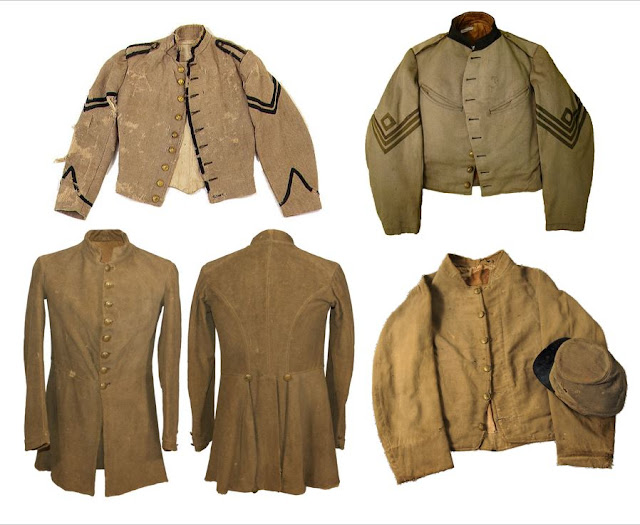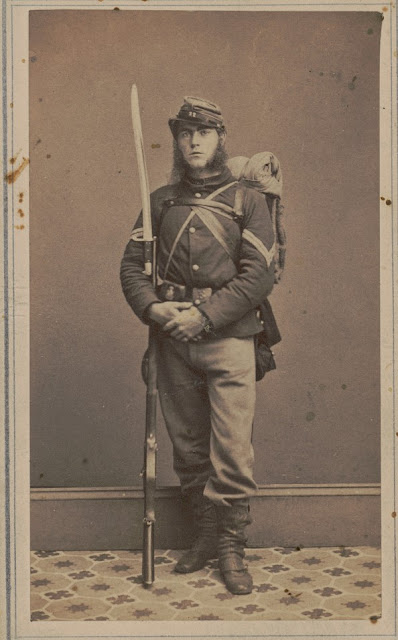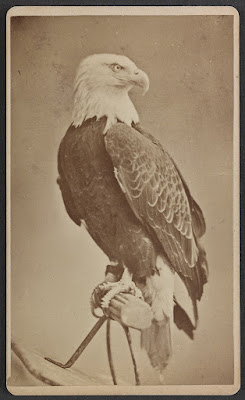With the 11th Ohio Cavalry in the Far West
Among Ohio’s regiments during the Civil War, none traveled further west than the 11th Ohio Volunteer Cavalry. While most of their Buckeye trooper brethren served east of the Mississippi River, the 11th Ohio (and for a portion of the war the storied 2nd Ohio Cavalry) served in the western territories. Rather than fighting the Confederacy, the 11th Ohio Cavalry served to buttress the Federal military presence along the Oregon Trail and at other points protecting the flow of emigrants who sought their fortunes in the Far West.
“To be sure, we are not engaged in as
active service as those in the armies in the east or southwest, yet at the same
time, we are in the service of the U.S. and the position we occupy is of far
more importance as that of any troops in the field,” one trooper stated. “These
western forts have to be garrisoned by some troops, and why not us?”
 |
| Fort Laramie in Idaho Territory in 1864 as depicted by Lieutenant Caspar Collins of the 11th Ohio Cavalry. Collins would be killed in a skirmish with Indians the following year. (PBS Antiques Roadshow) |
Gold served as a primary lure drawing
emigrants to the West and as Hospital Steward Kilburn H. Stone noted while
stationed at Fort Laramie in the newly created Idaho Territory (now present-day
Wyoming), “it is estimated that no less than 20,000 emigrated between the
months of May and August 1863, a large portion of which passed by this fort. Gold
was first discovered in the Salmon River in 1861 and caused a large emigration
to this country. In 1862, gold was discovered in quantity on the Kooskooskia
River and its mines are now considered among the richest in the west. Gold is
found in the bed and along the banks of these rivers. The Bannock city gold
mine fever raged very high here now. The citizens, discharged soldiers, and
mountaineers are nearly all going or making calculations to go just as soon as spring
opens.”
“A large increase of emigration is expected in the spring,” he continued. “This country abounds plentifully in all kinds of wild game such as buffalo, black and grizzly bears, elk, deer, antelope, wolves by the thousands, hare, and rabbits. There are now about 500 men stationed at this garrison; the balance of the regiment are stationed along the old stage line, some at Fort Halleck, some at Sweetwater Bridge, and some at South Pass; they are stationed for the purpose of keeping the Indians at bay.”
“The occasional severity of the weather is worthy of record. On the 3rd, 4th, and 5th of January 1864, the mercury at Fort Laramie froze each night- on the 3rd for four hours, on the 4th for 15 hours, and on the 5th for 12 hours. A spirit thermometer would have indicated from 50-60 degrees below zero. On one of these mornings an experiment was made with sanitary whiskey and upon being exposed in a tin cup, it froze solid in 20 minutes and was tossed about like a brickbat.” ~ Whitelaw Reid, Ohio in the War
Writing from Fort Laramie in December 1863, one trooper of
Co. D noted “we are in almost perfect safety” and “are in a health country,
have plenty of everything, and dress parades every evening if the inclemency of
the weather is not too much so. We certainly should be the most happy and
contented soldiers in the U.S. service, especially since we have a Reading Room
(which is a good institution), and a brass band. Yes, strange as it may seem,
we have a brass band 600 miles from civilization proper. Co. A organized the
band, procured instruments, sent to Denver for a teacher, and we now have the
most inspiring strains of music ever heard in Idaho I reckon.”
 |
| The far west showing the initial outlines of the Idaho Territory. This entire region was the theater of action for the 11th Ohio Cavalry during the Civil War. |
Regarding the reading room, Whitelaw Reid added that “a
library of 800 volumes was obtained from the states by donation and purchase and
a reading room established at headquarters which was well filled with
newspapers and magazines. All books and newspapers were distributed to distant
posts and were exchanged from time to time. Even a theater was improvised and
though pantomime was cultivated principally, tragedy and comedy were not
neglected and in fact were not badly presented.”
Thinking of music, Hospital Steward Stone
noted how in February 1864 a tribe of Sioux visited Fort Laramie and performed
a “war dance” as he called it. “When they entered the parade ground they came
running as fast as possible, whooping and yelling as the top of their voices in
the most hideous manner imaginable,” he wrote. “They then formed a circle, male
and female, old young, and took their respective positions in the circle.
Directly the musicians began and then away they went, all hands round, singing,
whooping, and yelling again tremendously.”
“There were about 150 part who took
part in the mazey dance while hundreds of other Indians were on-lookers,” Stone
continued. “Most of the females (or squaws as they call them here) were attired
in beautiful, beaded deer skin dresses of their own industry and neatness.
Their music consisted of four drums, made more like a banjo than anything I can
think of. They also had some powder horns filled with small pebbles that they
rattled and called music. I see any quantity of Indians every day; they are the
most of them very friendly. I often go to their wigwams and smoke with them the
pipe of peace. They have not been troublesome at all of late.”
The 11th Ohio Cavalry would spend the remainder of the war in the far west and was the last Ohio regiment to be mustered out of service, not exiting the service until July 1866.
To learn more about soldiers serving in the West during the Civil War, please check out "Soldiering on the Plains During the Civil War" which features a letter from a soldier in the 10th U.S. Infantry serving at Fort Kearny in Nebraska Territory.
Sources:
Letter from members of Co. F, 11th Ohio Volunteer Cavalry, Cadiz Democratic Sentinel (Ohio), January 27, 1864, pg. 3
Letter from “A Soldier,” Co. D, 11th Ohio Volunteer Cavalry, Highland Weekly News (Ohio), January 28, 1864, pg. 1
Letter from Hospital Steward Kilburn H. Stone, 11th Ohio Volunteer Cavalry, Elyria Independent Democrat (Ohio), March 16, 1864, pg. 2
Reid,
Whitelaw. Ohio in the War: Her Statesmen, Generals, and Soldiers. Volume II:
The History of Her Regiments and Other Military Organizations. Cincinnati:
The Robert Clarke Co., 1895, pg. 821










Comments
Post a Comment